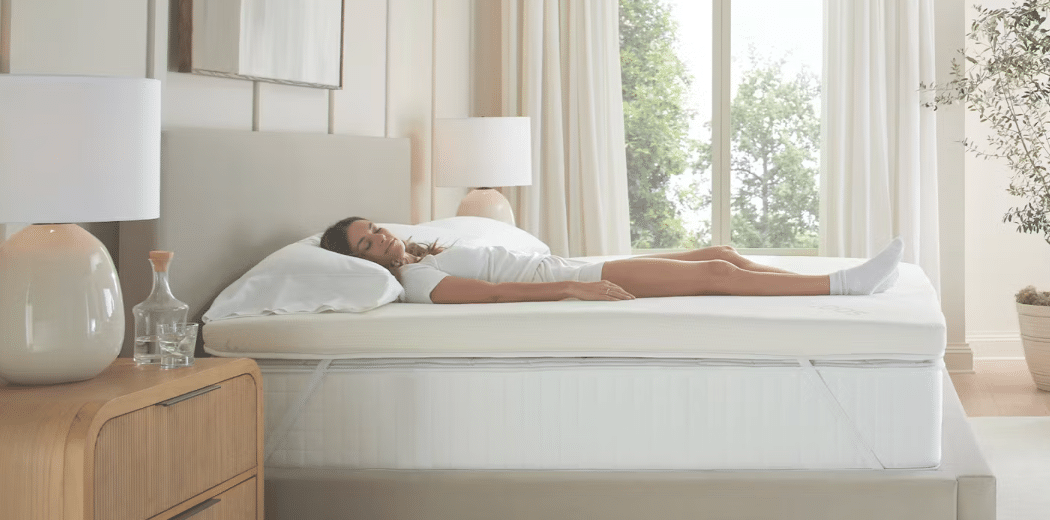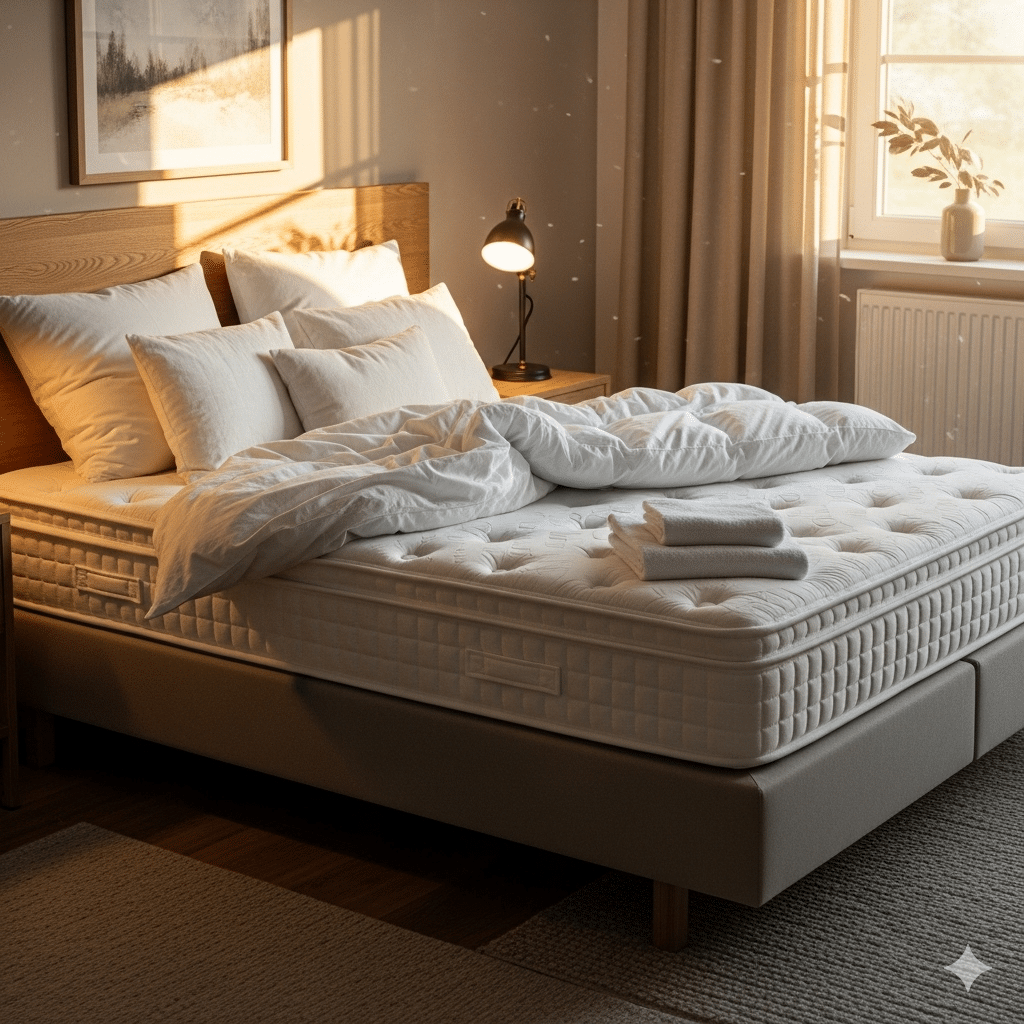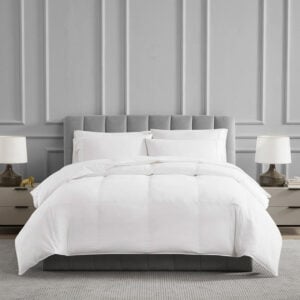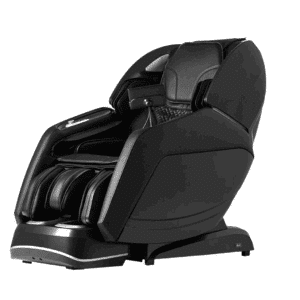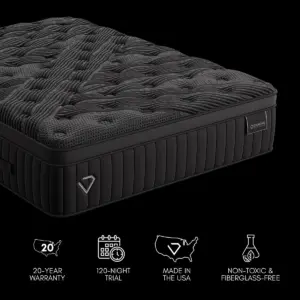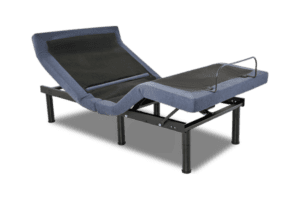Beginner’s Guide to Understanding Orthopedic Mattresses
Open Up Better Sleep with Orthopedic Mattresses
In the quest for restorative sleep, the type of mattress you choose plays a crucial role. Enter orthopedic mattresses—specifically crafted to provide firm support for your back and joints, ensuring proper spinal alignment along with even weight distribution. For those grappling with back pain or simply in need of a firmer sleeping surface, an orthopedic mattress may be your best ally in achieving quality sleep.
What Exactly is an Orthopedic Mattress?
An orthopedic mattress is more than just a bed; it’s engineered to offer targeted support to your joints, back, and overall body. These mattresses derive their design from orthopedic principles, which focus on alleviating disorders and deformities of the spine and joints. By providing a firmer sleeping surface, orthopedic mattresses aim not only to alleviate pain but also to enhance sleep quality.
A Brief History and Evolution
The concept of orthopedic mattresses gained traction in the 1950s, influenced by medical studies dedicated to bone and joint functions. Mattress manufacturers seized the opportunity to produce sleep solutions that offered better support and relief from discomfort. However, the term “orthopedic” has transitioned into more of a marketing term in recent years, with no official regulations governing its use. While most modern mattresses offer varying levels of support, the “orthopedic” label often signifies certain features aimed at those suffering from chronic pain.
Key Features of Orthopedic Mattresses
Orthopedic mattresses come loaded with features designed specifically for comfort and support. Here are some key characteristics you should consider:
Joint Support
Most orthopedic mattresses utilize high-density foam, latex, or pocketed springs designed to maintain their shape and provide consistent joint support. This ensures a comfortable sleeping position that reduces the risk of waking up with aches.
Spine Alignment
Proper spinal alignment is crucial. An orthopedic mattress helps keep your spine in a neutral position, preventing muscle strain and minimizing the risk of degeneration. The National Spine Health Foundation emphasizes the importance of maintaining spinal alignment to avoid serious health issues.
Pressure Relief
With materials like memory foam or latex that contour to your body, orthopedic mattresses effectively minimize pressure on sensitive areas such as hips and shoulders. Some models feature zoned support systems, offering differing firmness levels to target varying body needs.
Firmness
Typically boasting a medium-firm feel, orthopedic mattresses distribute weight evenly, alleviating excess pressure on the neck, hips, and back. Different sleepers may prefer varying levels of firmness; for example, stomach sleepers usually gravitate towards firmer beds, while side sleepers might opt for a little more cushioning.
By prioritizing these features, orthopedic mattresses promise a healthier, more restful sleep.
Benefits of Orthopedic Mattresses
Investing in an orthopedic mattress can yield significant advantages that impact your sleep quality and overall health. Let’s explore these benefits:
Pain Relief
Pain relief is perhaps the most notable benefit. Specifically engineered to support the spine and joints, orthopedic mattresses are ideal for individuals suffering from back pain, joint pain, or chronic conditions such as arthritis.
A study featured in the Journal of Pain Research shows that selecting a mattress tailored to individual needs can dramatically enhance sleep quality and alleviate pain.
Spine Alignment
Proper spine alignment is vital for reducing muscle strain and enhancing overall health. Orthopedic mattresses promote a neutral spine, essential for avoiding muscle strain, as emphasized by experts.
Pressure Relief
Orthopedic mattresses excel at evenly distributing body weight, thus minimizing pressure points that lead to discomfort. The use of memory foam and latex supports this, offering deeply contoured, personalized support.
Types of Orthopedic Mattresses
When considering an orthopedic mattress, you’ll encounter several types, each with unique features:
Latex Mattresses
Durable and supportive, latex mattresses can be made from either natural or synthetic latex, offering a firm yet comfortable sleeping surface.
Hybrid Mattresses
Combining springs and foam, hybrid mattresses provide versatility and medium-firm support. They’re often more affordable than pure latex options.
Pocket Sprung Mattresses
With individual springs wrapped in fabric pockets, these mattresses enable independent movement, providing targeted support while minimizing motion transfer.
Memory Foam Mattresses
Recognized for their ability to contour, memory foam mattresses offer excellent pressure relief, adapting to the body’s shape.
Choosing the Right Orthopedic Mattress
Making an informed choice can simplify the selection process. Focus on these factors:
Support
Ensure the mattress supports your spine in a neutral position with high-density foam or latex for long-lasting support.
Firmness
Consider your sleep position—medium-firm is generally best for a range of sleepers, but personal preference matters immensely.
Pressure Relief
Opt for materials known for their contouring abilities, such as memory foam or latex, for targeted pressure relief.
Spine Alignment
A well-designed orthopedic mattress helps keep your spine aligned, minimizing the risk of muscle strain and stiffness.
Final Thoughts
In summary, orthopedic mattresses are tailored to provide robust support, effective spine alignment, and excellent pressure relief. This makes them especially beneficial for those suffering from back or joint pain, athletes focusing on recovery, and anyone looking for a firmer sleeping surface.
As you explore options, consider your individual comfort needs while consulting professionals when necessary. Investing in an orthopedic mattress can significantly enhance your sleep quality and overall well-being.
For a more restful sleep and a healthier lifestyle, choosing an orthopedic mattress may just be the game-changer you’ve been searching for.




